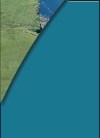Tuamgraney Protestant parish church incorportates pre-Romaneque remains, including an early rebuilding
of an even earlier (6th century) monastry, founded by St. Cronan of Holy Island.
A simple sandstone building on the west bank of the river. The Thorgrim
stone, before the doorway, is unique for its ogham and runic inscriptions.
In the grounds is a Romanesque church, St. Flannan's Oratory, dating from
the 12th century.
St. Molua's Oratory: the small oratory of St. Lua or Molua from whom Killaloe
got its name is an example of early Irish church building.
(Inis Cealtra - Island of the burial ground; or Island of monastic cells)
2 km from Mountshannon. It is notable for its early monastic remains, including
a round tower. St. Caimin founded the settlement in the 7th century and occupation
continued until the 13th century. It was a famous place of pilgrimage until fairly recently.
Desrerves a visit, being built on the site of St. Mainchin's Church (580)
with a later church (1778) in its graveyard.
or St. Macreehy's Church
(12th century), was built on the site of a famous 6th century school founded by St. Macreehy.
The remains of the church mark the site of an ancient burial ground, no longer used.
(Cill Fionnúrach - Fionnúir's church)
Until recent times the villages significance lay in its being the ecclesiastical
capital of a small diocese that is now administered from Galway.
Kilfenora Cathedral: now partly roofless, received its cathedral status when
Kilfenora became a diocese in the 12th century. Its first bishop was St.
Fachtna. Only the nave is now in use, having been incorporated in the Protestant
church. The three-light east window of the unroofed chancel (c. 1200) is worth
notice with a tomb effigy occupying the wall on either side of the window.
There are three High Crosses in the churchyard and another to the West of it.
(A fifth now stands in St. Flannan's Cathedral in 1821). The most interesting
is the ornately carved Doorty (0 Dughartaigh - a Tipperary family with hereditary
rights to the bishopric) cross dated from the 12th century, showing three bishops
on one side and a crucifixion on the other.
(Nuachongbháil - new monastic settlement)
(3.5 km north of Kilfenoa.) An ancient monastic site, occupied up to the
19th century. The remains of the church show that it was built and restored
at different times, from the 12th to the 14th centuries.
A memorial chapel of the O'Davoren family, built in 1725 by James Davoren of
Lisdoonvarna is near by as is a holy well, Tobhar Mo Ghua.
(Rath Bóirne- Burren earth fort)
Not far from Ballyvaughan, in the Feenagh Valley. There is a medieval
church on the site, known in 1302 as Rayth, with an interesting medieval
waterfront at the doorway.
(Corco Mraud - people of Mraud)
Between Bealaclugga and Carran, the Abbey was established by Donal Mor O'Brien in 1180.
The remains include an altar-tomb, said to be the burial place of King Conor O'Brien,
(d.1267). It has a primitive effigy of the king.
This cluster of early Christian churches is located on the northern slope of
Turlough Hill. The Three churches are said to have been founded by "The Three
Colmans", (one might have been St. Colman of Kilmacduagh in Galway),
The largest, at the western side, has pre-Romanesque nave and Romanesque Chancel.
In the south-west corner there is a font carved to represent two animals with intertwined necks.
On the summit of Turlough Hill a vast iron age hill fort has been discovered.
(Cill Inghine Bhaoth - Church of Baoth's daughter)
An early monastic site named after St. Inghean Bhaoth. It has the remains of
a church of the 11th or 12th century.  There is a sheila-na-gig, over the south
door. There is also the base of a round tower. There is a sheila-na-gig, over the south
door. There is also the base of a round tower.
De Clare's House, a turret and bawn is but a short distanc eaway on the banks
of the River Fergus.
1.5 km west is the site of the Tau Cross, a T-shaped cross with two carved human
masks one at each end of the transom. The cross has now been removed but reproductions
of the cross can be seen in the Burren Display Centre and at the Clare Heritage
Centre in Corofin.
A sort distance from the village are the remains of a fairly large medieval parish church.
Nearby is Temple Cronan church, (12th century) with some grotesque Romanesque
heads on the exterior wall.
Previous
 Next
Next
|


 There is a sheila-na-gig, over the south
door. There is also the base of a round tower.
There is a sheila-na-gig, over the south
door. There is also the base of a round tower.